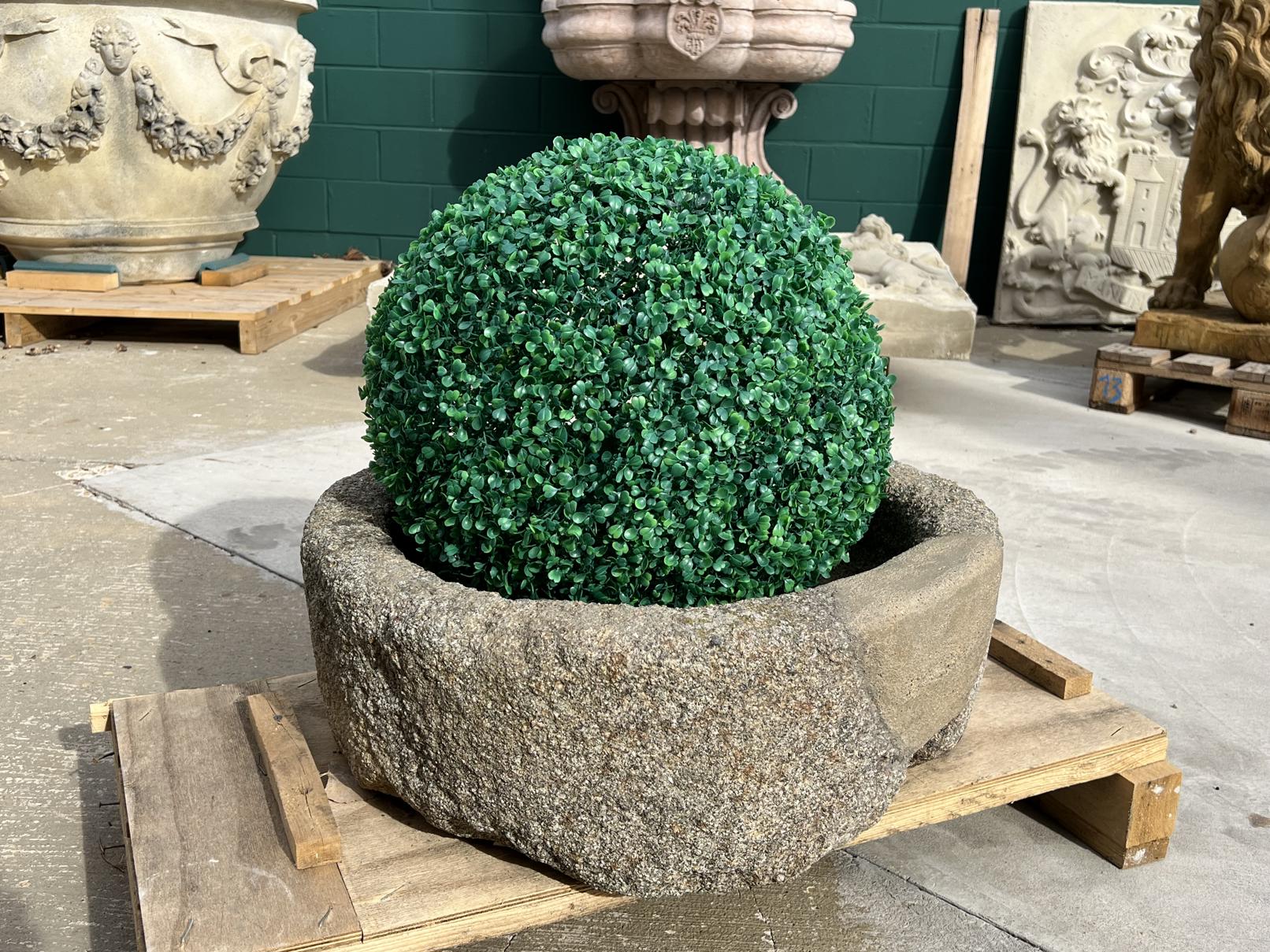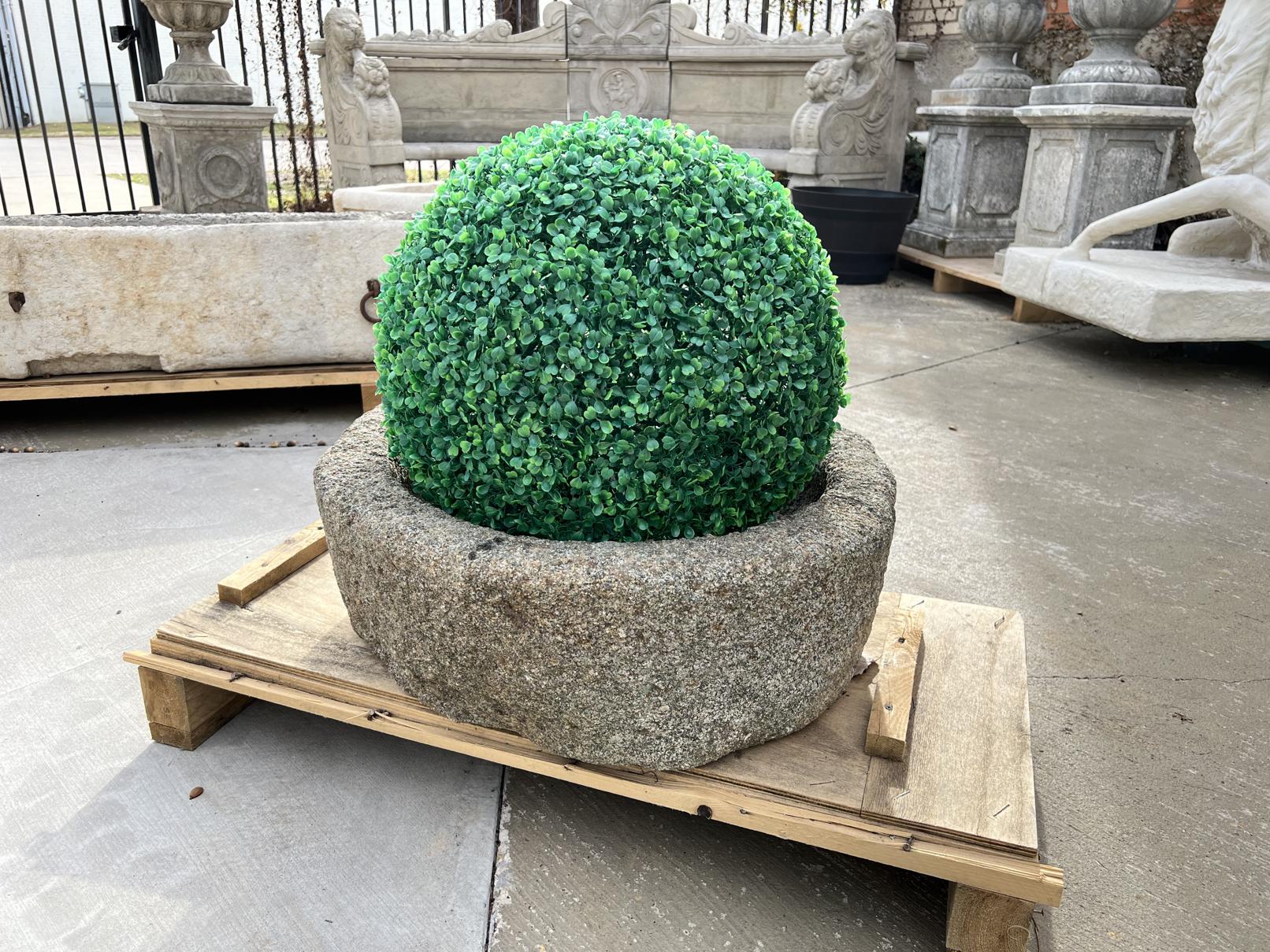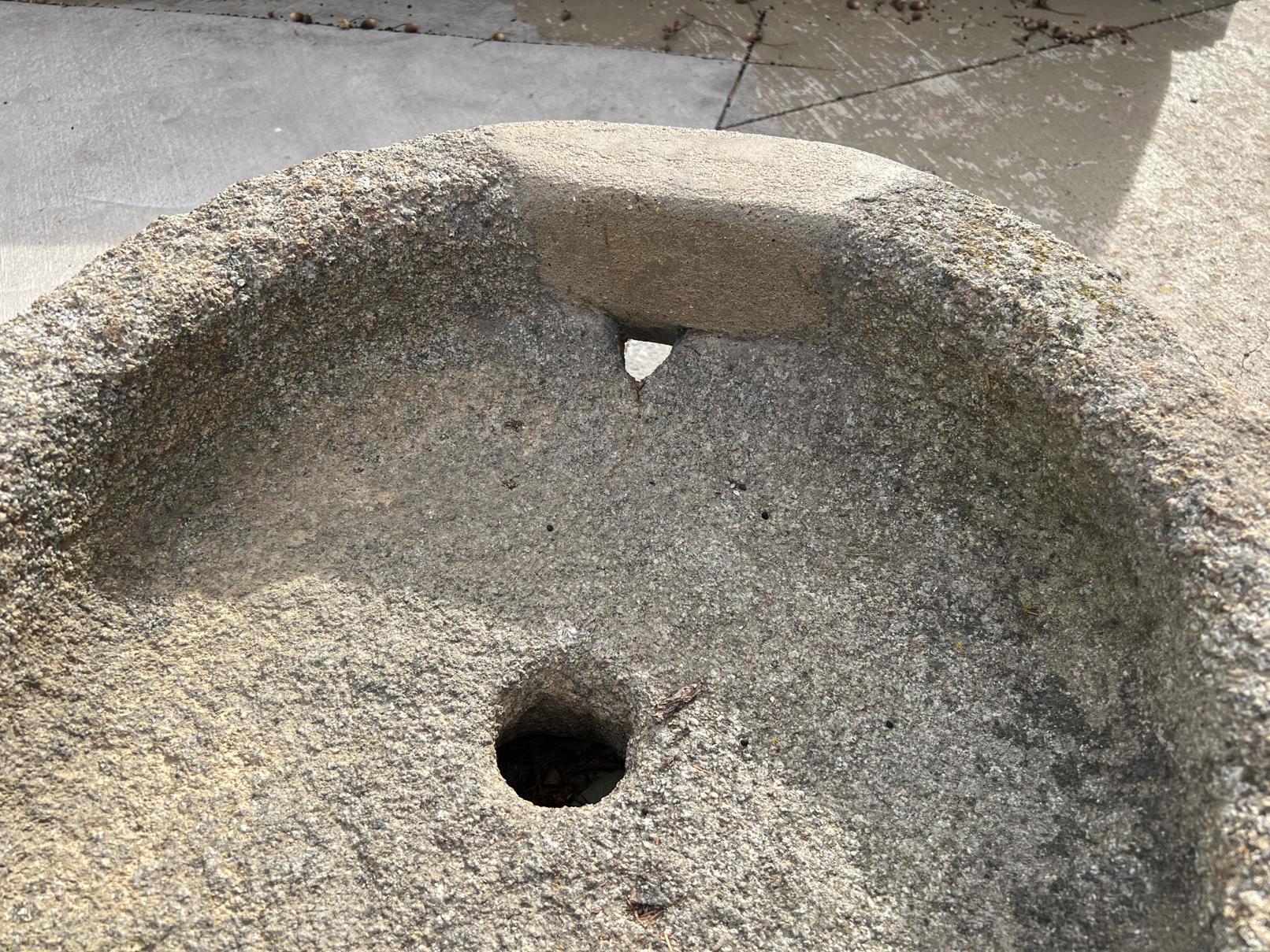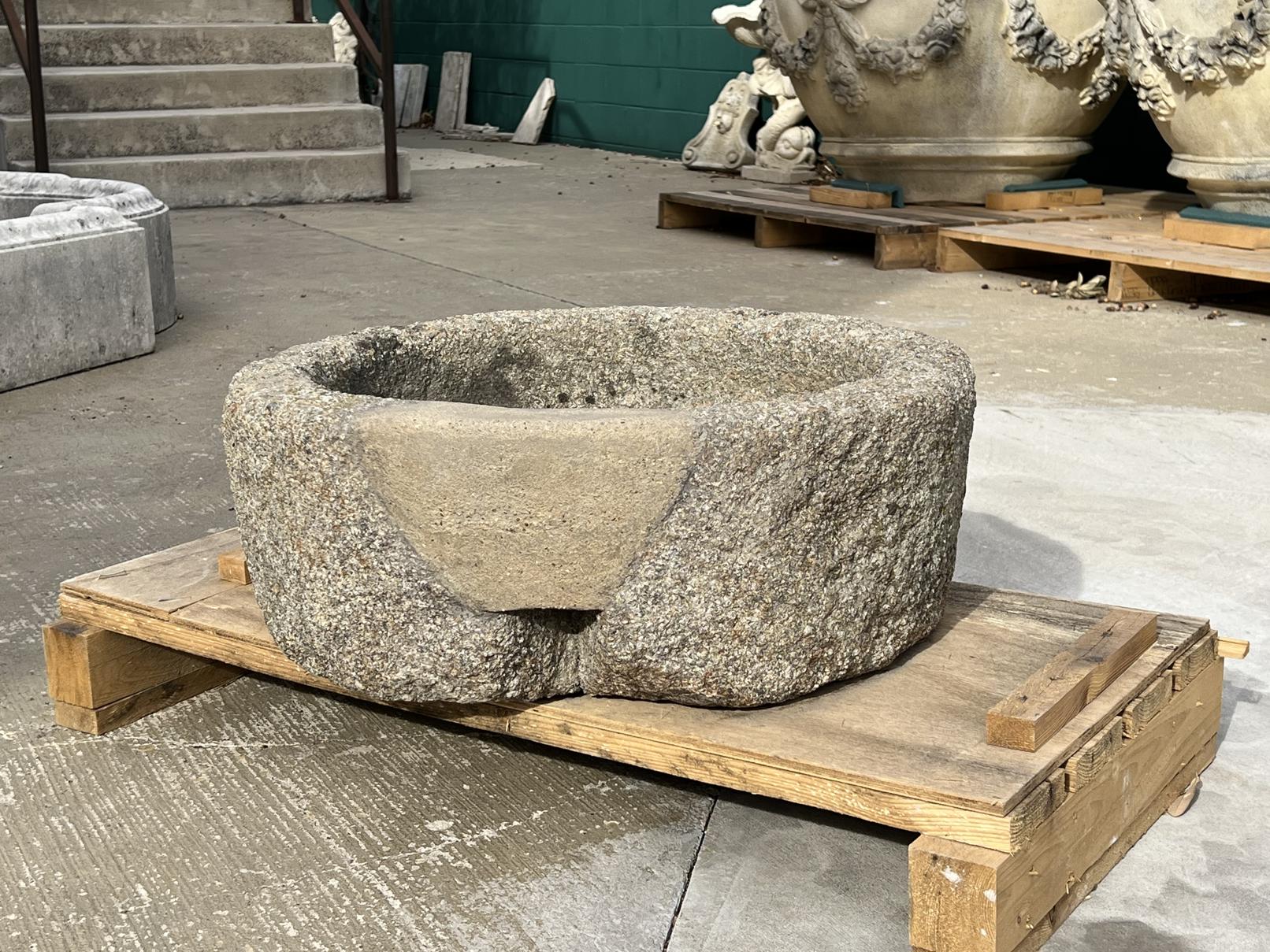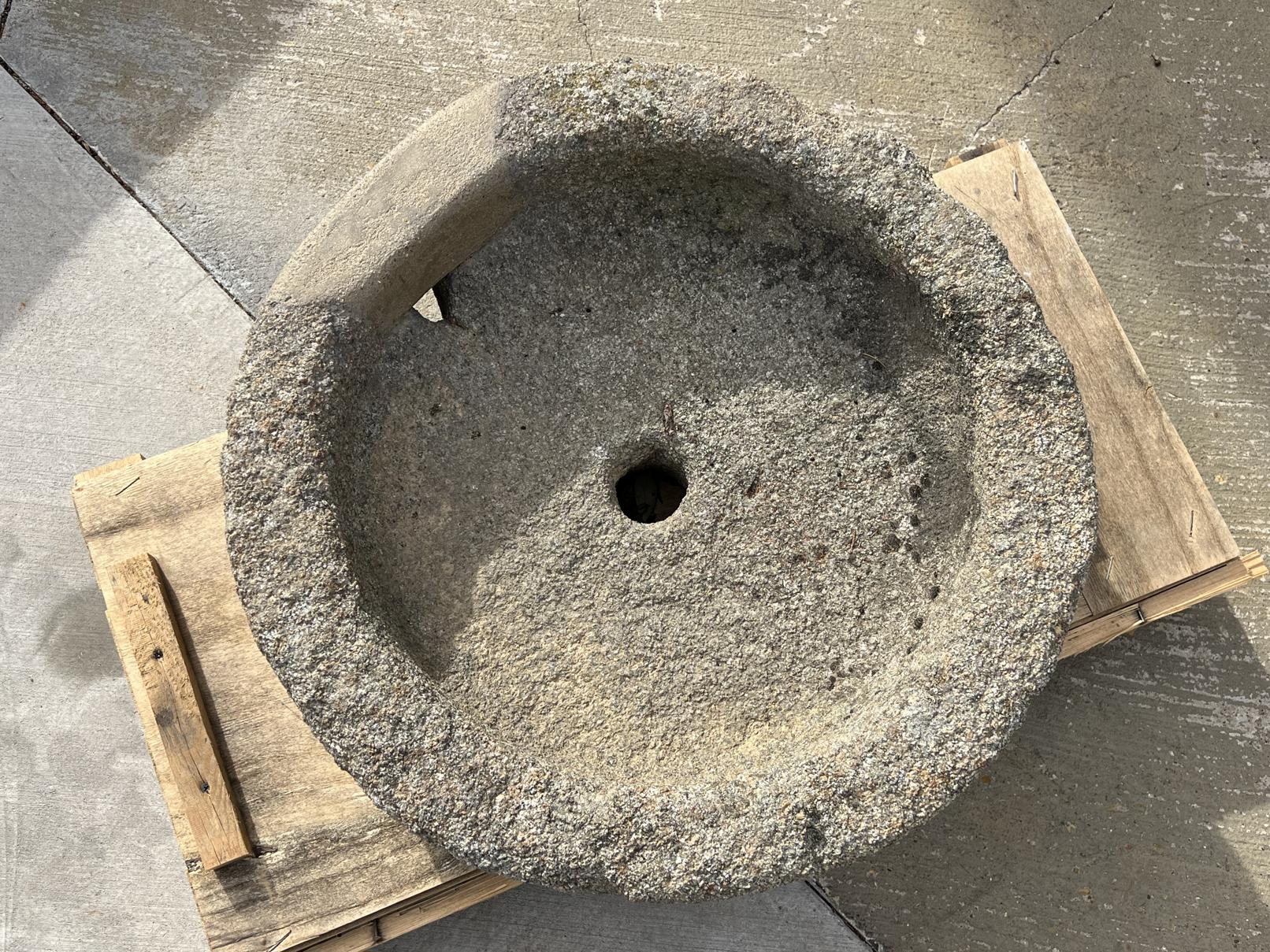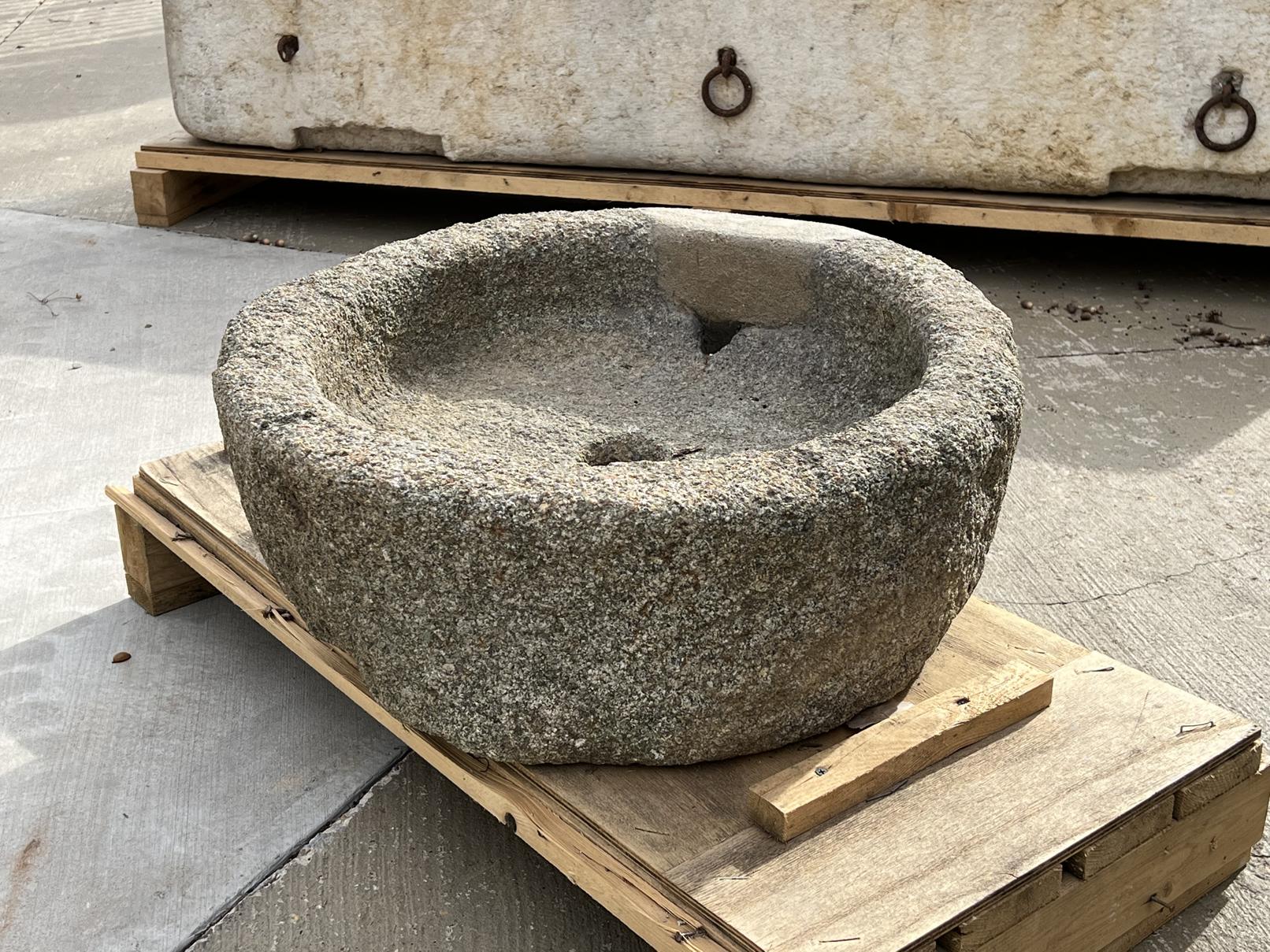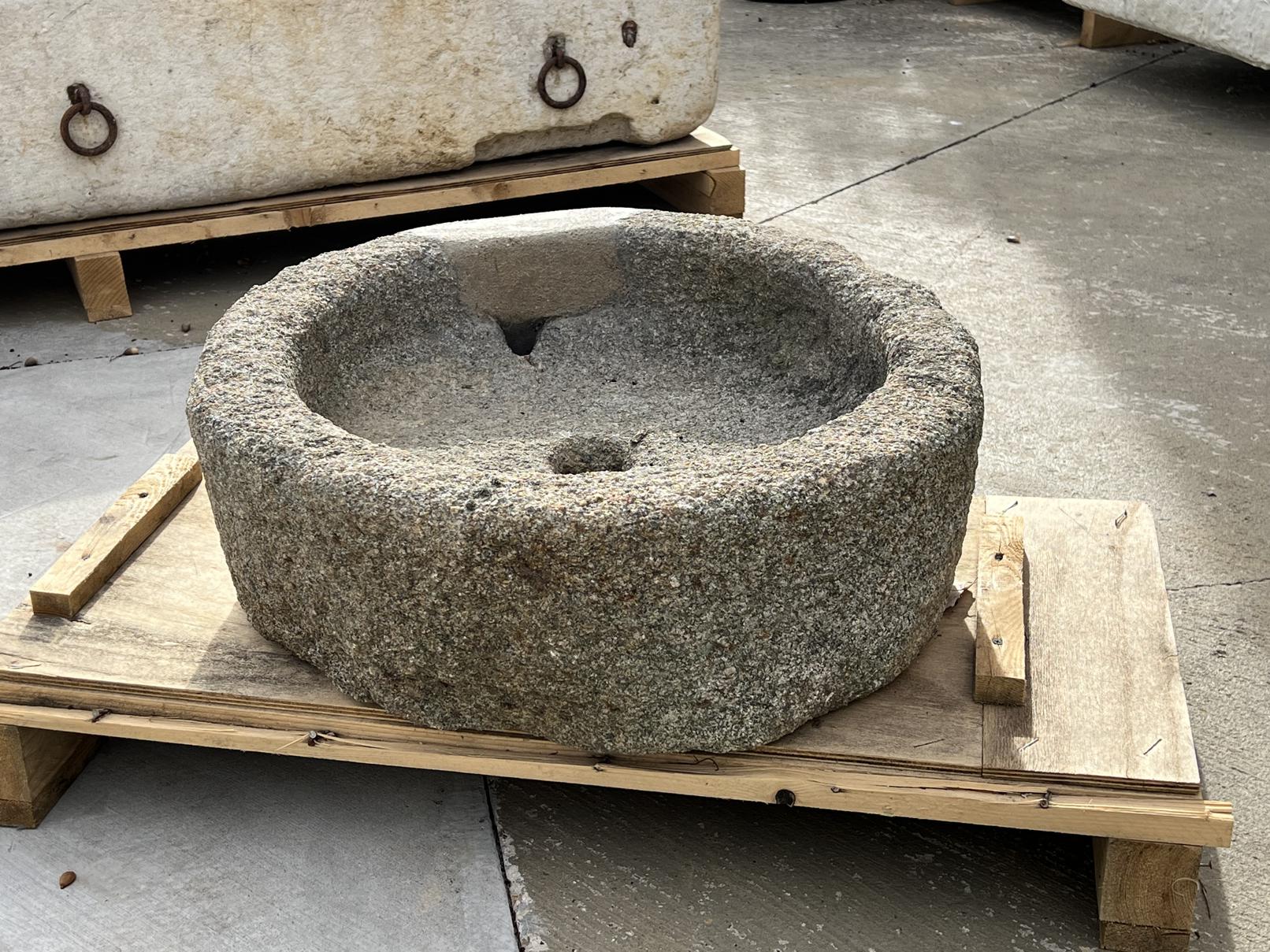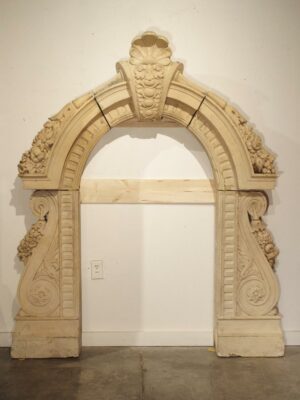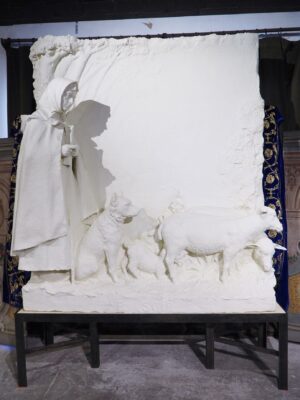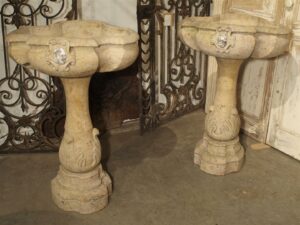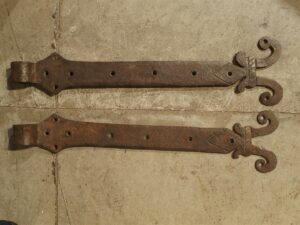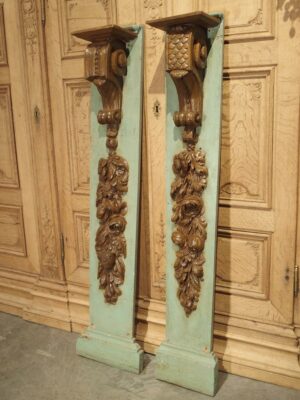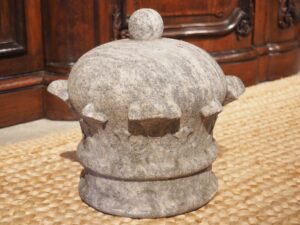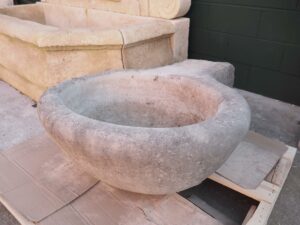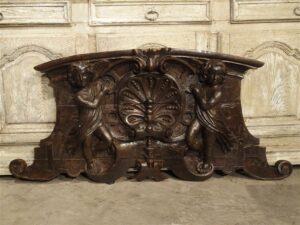Mill stones have been used for a several thousand years to grind grains, hence their other name: grind stone. Their origins can be traced back to Aboriginal Australia some 60,000 years ago. Our granite mill stone dates to circa 1860 and was hand-carved in Normandy, France.
The circular piece of granite would have functioned as the bedstone of the mill stone, which is the stationary base. There is a two inch diameter hole at the bottom, which would have held a shaft that rotated the top section of the mill stone, known as a runner stone. Mill stones are designed so that the ground grains accumulate along the outer ridge, making it easier to collect the flour. This particular bedstone is supported by a four inch tall molding that is three inches thick.
Our granite mill stone from Normandy is full of nuances that add character. Because the granite was carved by hand, it is not a perfect circle. A section of the side has been professionally restored, resulting in a solid patch, as opposed to the variegated dark/light gray stone with black, green, and brown patina. Ideally suited to be an outdoor planter, the shaft hole can serve as the drainage hole. In the same vein, the granite could be installed as a farmhouse sink, using the pre-existing hole as a drain.
CONDITION: Good antique condition with a recent professional restoration to a portion of the side (see photos). Light buildup with traces of moss and lichen, leading to an interesting patina. Granite is a natural material that can change colors due to exposure to the elements.


